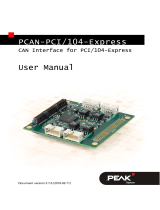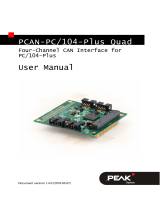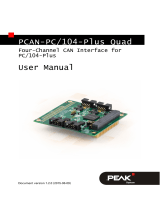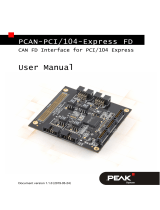
PCAN-TJA1054 - User Manual
1 Introduction
Tip: At the end of this manual (Appendix B) you can find a
Quick Reference with brief information about the installation
and operation of the PCAN-TJA1054.
With the bus converter PCAN-TJA1054 you can connect a High-
speed CAN component (like one of the PC/CAN adapters from the
PCAN series, the PCAN-Dongle for example) to a Low-speed CAN.
The name TJA1054 refers to the LS-CAN transceiver of the same
name by Philips, which is used in this bus converter.
Low-speed CAN (LS-CAN)
The LS-CAN is primarily intended for low-speed applications up to
125 kBaud in passenger cars. Like the High-speed CAN (HS-CAN)
the LS-CAN transmits signals differentially through two wires.
However, its fault tolerance (at a short circuit, for example)
automatically provides an operation with only a single wire.
1.1 Properties at a Glance
Direct connection to a HS-CAN component (Sub-D, 9 pins)
Terminierung des HS-CANs mit 62 Ω
Voltage supply (5 V) via HS-CAN connector (additional AC
adaptor is not needed)
Indicator LEDs for power supply and errors on LS-CAN
Low-speed CAN functionality (error tolerant)
Transfer rates up to 125 kBit/s
Switchable LS-CAN termination (560 Ω or 5.66 kΩ)
4





















